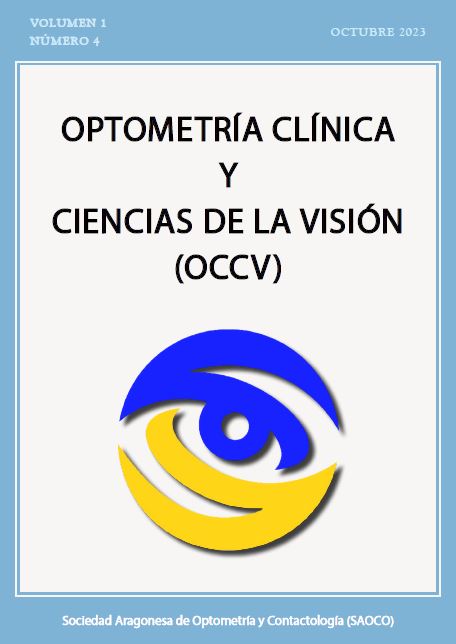Recomendaciones Clínicas Basadas en la Evidencia Científica para el Control de la Progresión de la Miopía
DOI:
https://doi.org/10.71413/sqfjkv91Palabras clave:
Control Miopía, GRADE, Revisión Sistemática, Lentes de Contacto, AtropinaResumen
Relevancia: Una herramienta para la toma de decisiones en el gabinete de optometría.
Resumen: En este trabajo se establecen recomendaciones clínicas basadas en la evidencia científica para la elección de tratamiento en el control de progresión de miopía. Se ha realizado una exhaustiva revisión bibliográfica en las bases biomédicas siguiendo el método: Grading of Recommendations Assessment, Development, and Evaluations (GRADE). Esta metodología aceptada por los organismos internacionales (Cochrane, Ministerio de Sanidad, Food and Drugs Administration, etc.) define cómo realizar una búsqueda de información científica y cómo debe ser clasificada en función de la calidad de los estudios en base a unos estándares. A partir de esta información organizada, elabora recomendaciones clínicas de mayor o menor fuerza, teniendo en cuenta un balance de beneficio/riesgo de la intervención. Tras filtrar más de 1000 publicaciones se han elaborado una serie de recomendaciones clínicas para las diferentes intervenciones orientadas al tratamiento del control de progresión de la miopía. El uso de metodologías estandarizadas para la elaboración de recomendaciones clínicas facilita la interpretación y aplicabilidad de los resultados de trabajos científicos.
Referencias
Holden BA, Fricke TR, Wilson DA, Jong M, Naidoo KS, Sankaridurg P, et al. Global Prevalence of Myopia and High Myopia and Temporal Trends from 2000 through 2050. Ophthalmology. 2016;123(5):1036-42. DOI: https://doi.org/10.1016/j.ophtha.2016.01.006
Zhang X, Zhou Y, Wang Y, Du W, Yang J. Trend of myopia through different interventions from 2010 to 2050: Findings from Eastern Chinese student surveillance study. Front Med (Lausanne). 2022;9:1069649. DOI: https://doi.org/10.3389/fmed.2022.1069649
GPC GdtpladMdEd. Elaboración de Guías de Práctica Clínica en el Sistema Nacional de Salud. Actualización del Manual Metodológico 2016 [2018]. Available from: http://portal.guiasalud.es/emanuales/elaboracion_2/?capitulo.
Pablo Alonso-Coello DR, Ivan Sola y Laura Martínez García. La formulación de recomendaciones en salud: el sistema GRADE
Formulating health care recommendations: The GRADE system. Med Clin (Barc)2013. p. 366–73.
Asensio-Sánchez VM. Superdiluted atropine at 0.01% reduces myopia progression in children and adolescents. A 5-year study of safety and effectiveness. Arch Soc Esp Oftalmol (Engl Ed). 2019;94(3):e19. DOI: https://doi.org/10.1016/j.oftale.2018.08.011
Barrio-Barrio J, Pérez-Flores I. Comments on: Superdiluted atropine at 0.01% reduces progression of myopia in children and adolescents. A 5-year study of safety and effectiveness. Arch Soc Esp Oftalmol (Engl Ed). 2019;94(3):153-4. DOI: https://doi.org/10.1016/j.oftale.2018.10.006
Chia A, Chua WH, Cheung YB, Wong WL, Lingham A, Fong A, et al. Atropine for the treatment of childhood myopia: safety and efficacy of 0.5%, 0.1%, and 0.01% doses (Atropine for the Treatment of Myopia 2). Ophthalmology. 2012;119(2):347-54. DOI: https://doi.org/10.1016/j.ophtha.2011.07.031
Kumaran A, Htoon HM, Tan D, Chia A. Analysis of Changes in Refraction and Biometry of Atropine- and Placebo-Treated Eyes. Invest Ophthalmol Vis Sci. 2015;56(9):5650-5. DOI: https://doi.org/10.1167/iovs.14-14716
Lee SSY, Mackey DA, Lingham G, Crewe JM, Richards MD, Chen FK, et al. Western Australia Atropine for the Treatment of Myopia (WA-ATOM) study: Rationale, methodology and participant baseline characteristics. Clin Exp Ophthalmol. 2020;48(5):569-79. DOI: https://doi.org/10.1111/ceo.13736
Chua WH, Balakrishnan V, Chan YH, Tong L, Ling Y, Quah BL, et al. Atropine for the treatment of childhood myopia. Ophthalmology. 2006;113(12):2285-91. DOI: https://doi.org/10.1016/j.ophtha.2006.05.062
Diaz-Llopis M, Pinazo-Durán MD. Superdiluted atropine at 0.01% reduces progression in children and adolescents. A 5 year study of safety and effectiveness. Arch Soc Esp Oftalmol (Engl Ed). 2018;93(4):182-5. DOI: https://doi.org/10.1016/j.oftale.2018.02.006
Shih YF, Hsiao CK, Chen CJ, Chang CW, Hung PT, Lin LL. An intervention trial on efficacy of atropine and multi-focal glasses in controlling myopic progression. Acta Ophthalmol Scand. 2001;79(3):233-6. DOI: https://doi.org/10.1034/j.1600-0420.2001.790304.x
Azuara-Blanco A, Logan N, Strang N, Saunders K, Allen PM, Weir R, et al. Low-dose (0.01%) atropine eye-drops to reduce progression of myopia in children: a multicentre placebo-controlled randomised trial in the UK (CHAMP-UK)-study protocol. Br J Ophthalmol. 2020;104(7):950-5. DOI: https://doi.org/10.1136/bjophthalmol-2019-314819
Hieda O, Hiraoka T, Fujikado T, Ishiko S, Hasebe S, Torii H, et al. Efficacy and safety of 0.01% atropine for prevention of childhood myopia in a 2-year randomized placebo-controlled study. Jpn J Ophthalmol. 2021;65(3):315-25. DOI: https://doi.org/10.1007/s10384-021-00822-y
McCrann S, Flitcroft I, Strang NC, Saunders KJ, Logan NS, Lee SS, et al. Myopia Outcome Study of Atropine in Children (MOSAIC): an investigator-led, double-masked, placebo-controlled, randomised clinical trial protocol. HRB Open Res. 2019;2:15. DOI: https://doi.org/10.12688/hrbopenres.12914.2
Allen PM, Radhakrishnan H, Price H, Rae S, Theagarayan B, Calver RI, et al. A randomised clinical trial to assess the effect of a dual treatment on myopia progression: the Cambridge Anti-Myopia Study. Ophthalmic Physiol Opt. 2013;33(3):267-76. DOI: https://doi.org/10.1111/opo.12035
Aller TA, Liu M, Wildsoet CF. Myopia Control with Bifocal Contact Lenses: A Randomized Clinical Trial. Optom Vis Sci. 2016;93(4):344-52. DOI: https://doi.org/10.1097/OPX.0000000000000808
Cheng X, Xu J, Brennan NA. Accommodation and its role in myopia progression and control with soft contact lenses. Ophthalmic Physiol Opt. 2019;39(3):162-71. DOI: https://doi.org/10.1111/opo.12614
Li SM, Kang MT, Wu SS, Meng B, Sun YY, Wei SF, et al. Studies using concentric ring bifocal and peripheral add multifocal contact lenses to slow myopia progression in school-aged children: a meta-analysis. Ophthalmic Physiol Opt. 2017;37(1):51-9. DOI: https://doi.org/10.1111/opo.12332
Smith EL, Campbell MC, Irving E. Does peripheral retinal input explain the promising myopia control effects of corneal reshaping therapy (CRT or ortho-K) & multifocal soft contact lenses? Ophthalmic Physiol Opt. 2013;33(3):379-84. DOI: https://doi.org/10.1111/opo.12060
Walline JJ, Greiner KL, McVey ME, Jones-Jordan LA. Multifocal contact lens myopia control. Optom Vis Sci. 2013;90(11):1207-14. DOI: https://doi.org/10.1097/OPX.0000000000000036
Walline JJ, Walker MK, Mutti DO, Jones-Jordan LA, Sinnott LT, Giannoni AG, et al. Effect of High Add Power, Medium Add Power, or Single-Vision Contact Lenses on Myopia Progression in Children: The BLINK Randomized Clinical Trial. JAMA. 2020;324(6):571-80. DOI: https://doi.org/10.1001/jama.2020.10834
Li Y, Fu Y, Wang K, Liu Z, Shi X, Zhao M. Evaluating the myopia progression control efficacy of defocus incorporated multiple segments (DIMS) lenses and Apollo progressive addition spectacle lenses (PALs) in 6- to 12-year-old children: study protocol for a prospective, multicenter, randomized controlled trial. Trials. 2020;21(1):279. DOI: https://doi.org/10.1186/s13063-020-4095-8
Liu J, Lu Y, Huang D, Yang J, Fan C, Chen C, et al. The efficacy of Defocus Incorporated Multiple Segments (DIMS) lenses in slowing myopia progression: a retrospective real-world study. Ophthalmology. 2023. DOI: https://doi.org/10.1016/j.ophtha.2023.01.007
Nucci P, Lembo A, Schiavetti I, Shah R, Edgar DF, Evans BJW. A comparison of myopia control in European children and adolescents with defocus incorporated multiple segments (DIMS) spectacles, atropine, and combined DIMS/atropine. PLoS One. 2023;18(2):e0281816. DOI: https://doi.org/10.1371/journal.pone.0281816
Guo H, Li X, Zhang X, Wang H, Li J. Comparing the effects of highly aspherical lenslets versus defocus incorporated multiple segment spectacle lenses on myopia control. Sci Rep. 2023;13(1):3048. DOI: https://doi.org/10.1038/s41598-023-30157-2
Huang Z, Chen XF, He T, Tang Y, Du CX. Synergistic effects of defocus-incorporated multiple segments and atropine in slowing the progression of myopia. Sci Rep. 2022;12(1):22311. DOI: https://doi.org/10.1038/s41598-022-25599-z
Long W, Chen K, Yu S, Liang Z, Zheng B, Zeng J, et al. One-year Efficacy of the Defocus Incorporated Multiple Segment Lens in Chinese Myopic Children. Optom Vis Sci. 2023;100(1):111-6. DOI: https://doi.org/10.1097/OPX.0000000000001976
Ma JX, Tian SW, Liu QP. Effectiveness of peripheral defocus spectacle lenses in myopia control: a Meta-analysis and systematic review. Int J Ophthalmol. 2022;15(10):1699-706. DOI: https://doi.org/10.18240/ijo.2022.10.20
Zhang H, Lam CSY, Tang WC, Leung M, Qi H, Lee PH, et al. Myopia Control Effect Is Influenced by Baseline Relative Peripheral Refraction in Children Wearing Defocus Incorporated Multiple Segments (DIMS) Spectacle Lenses. J Clin Med. 2022;11(9). DOI: https://doi.org/10.3390/jcm11092294
Archivos adicionales
Publicado
Número
Sección
Categorías
Licencia
Derechos de autor 2024 Dra. Sofía Otín Mallada, Dña. Elena Rodríguez Gil, Dra. Laura Remón Martín (Autor/a)

Esta obra está bajo una licencia internacional Creative Commons Atribución-NoComercial 4.0.



